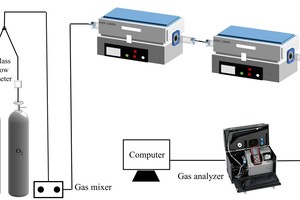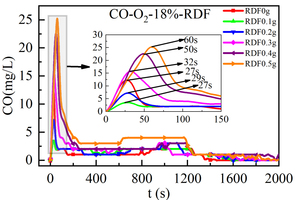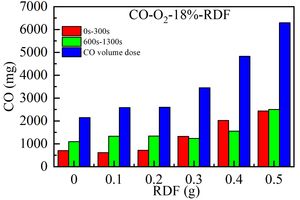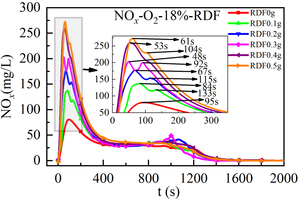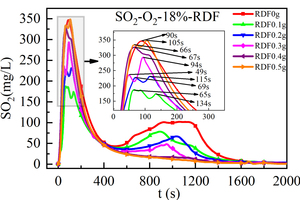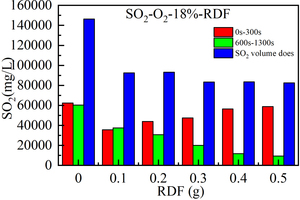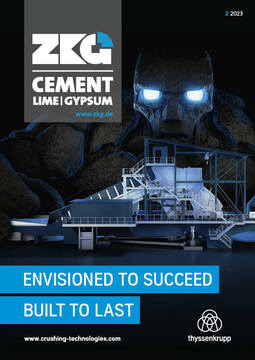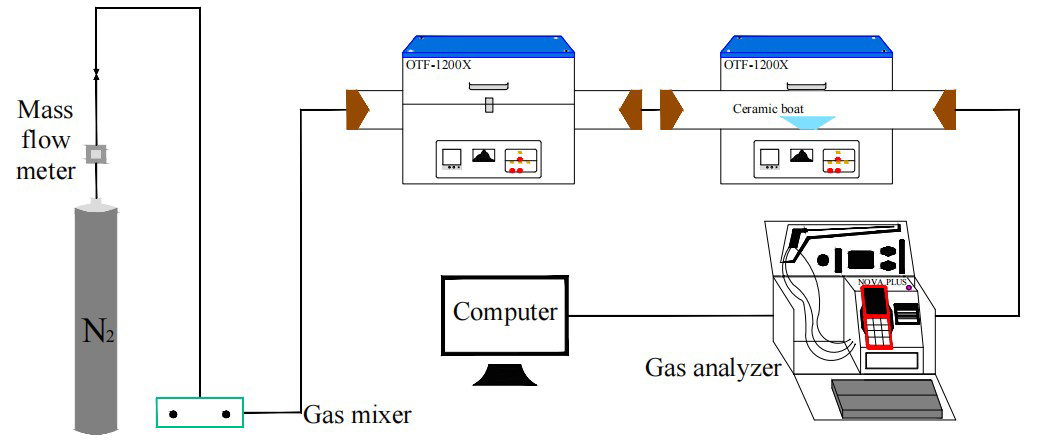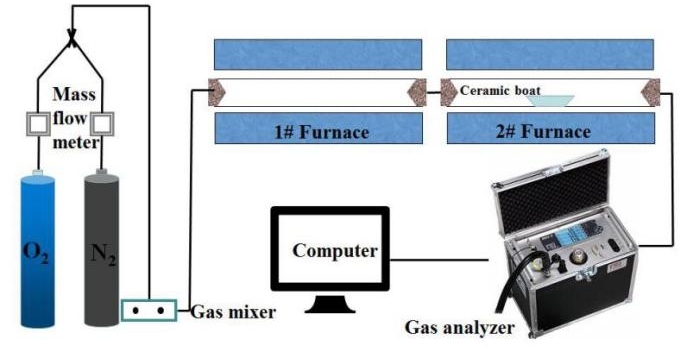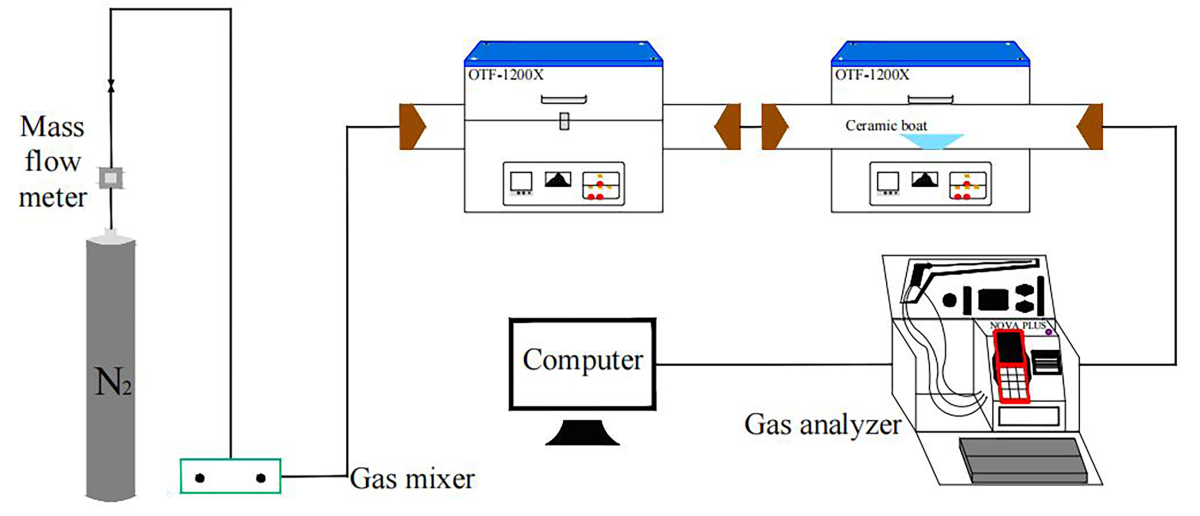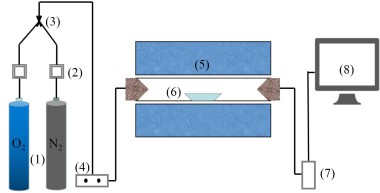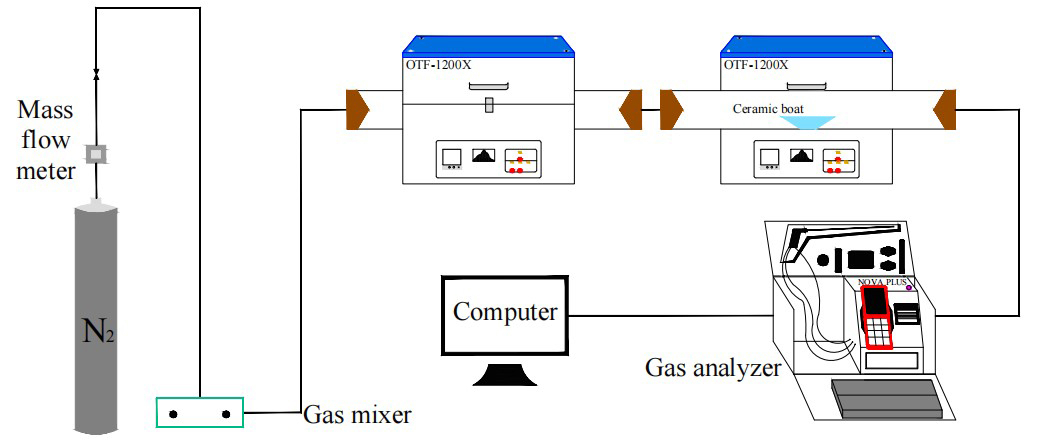Emission characteristics of NOx and SO2 during the co-combustion of refuse-derived fuels and bituminous coal in a cement precalciner
Aiming at the unstable emission of NOx and SO2 when the cement industry uses refuse-derived fuel (RDF) to partially replace the traditional pulverized coal as fuel for combustion, this paper uses the self-made double-tubular furnace experimental platform to simulate the high temperature and rapid injection of a precalciner. The emission characteristics of CO, NOx, and SO2 from mixed combustion products of bituminous coal and RDF with different qualities were studied at 900 °C. The results show that the release process of CO, NOx, and SO2 over time in the co-burning process of bituminous coal and RDF of different qualities all include volatile stages and carbon fixation stages. In the co-burning process of bituminous coal and RDF of different weights, NOx is mainly formed in the volatile stage when the RDF mixing weight is 0.1 g~0.5 g, the total amount of SO2 in the two stages is the same when the RDF mixing weight is 0.1g, and SO2 is mainly formed in the volatile stage when the RDF mixing weight is 0.2 g~0.5 g. The total amount of NOx increases with the increase of RDF mixing mass. When the RDF mixing mass is 0.3 g, the NOx amount increases less, SO2 emissions are lower, and the sulfur fixation effect is obvious. A good result can be obtained in actual production using RDF with a quality ratio of 60%.
1 Introduction
As a main basic building material, cement plays a key role in the development of the world economy, and the cement industry plays an important role in our industrialization, urbanization, and modernization construction projects. After more than 70 years of development, China’s cement production capacity, varieties, and consumption rank first in the world. By 2021, China’s annual cement output had reached 2.38 billion t, accounting for 54% of the world’s total cement output [1]. However, the rapid development of the cement industry also brings a series of environmental problems....

